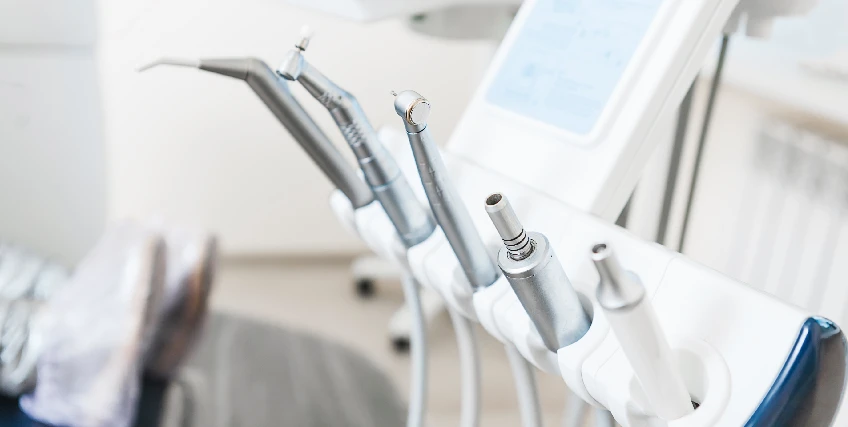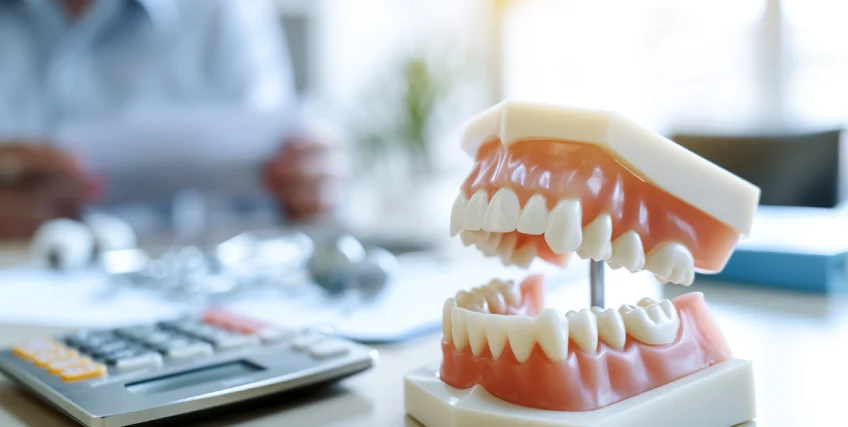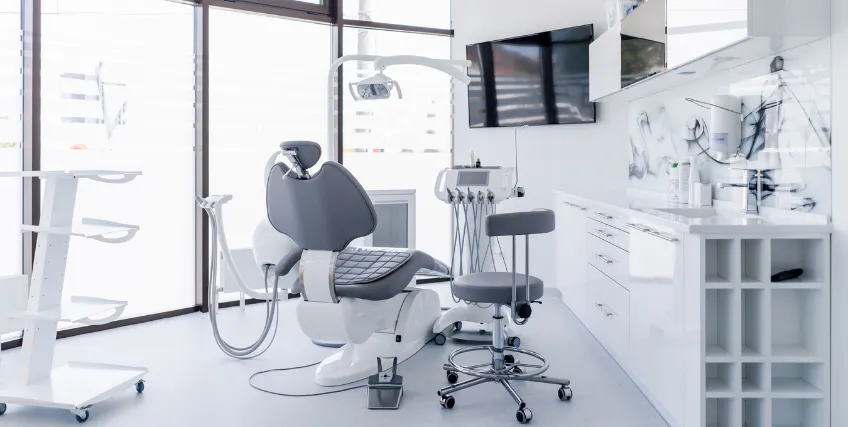Why Dental Equipment Financing Can Be Better Than Paying Cash
September 16, 2025 | Last Updated on: September 16, 2025

Dentistry does not look like it did twenty years ago. Today, dental professionals are expected to bring in digital x-ray machines, intraoral scanners, AI-driven imaging software, and even fully automated sterilization systems. The cost of this new equipment is not small. A modern dental chair alone can cost upwards of $10,000. Add operatory upgrades, and suddenly the total becomes a real challenge for any dental business.
That is why dental equipment financing has become so central to practicing owners. It allows dentists to spread equipment costs out, match repayment with incoming revenue, and avoid draining cash reserves. Instead of waiting years to add new equipment, dental practices can adopt tools today that improve patient care and set them apart in a competitive dental industry.
Think of it this way: cash may buy you a chair, but financing buys you room to grow.
The Real Cost of Paying Cash for Equipment
On the surface, paying cash for new equipment looks neat. No paperwork. No application process. Just a check and you are done. But for dental professionals running small business operations, the reality is different.
A single digital wireless imaging system can cost between $20,000 and $50,000. A new set of sterilization tools? Another $10,000. If a practice owner pays cash, that is $60,000 gone upfront. The dental office may own shiny new tools, but cash flow suffers.
Also, equipment purchases are not one-time. Technology in healthcare evolves quickly. What happens when an even better scanner arrives next year? Without dental equipment financing, practices risk being stuck – unable to upgrade because they drain reserves too soon.
It is also worth remembering that dental businesses face unpredictable expenses. A small repair in the operatory, a sudden dip in patient volume, or even an expansion opportunity may require quick funding. If money is already locked in equipment, flexibility will disappear.
How Dental Equipment Financing Works
Dental equipment financing is not one-size-fits-all. Dentists can choose between different financing options, depending on their needs and stage of growth.
One path is a dental equipment loan. Here, the practice borrows a set loan amount to purchase new equipment. The repayment is spread over time, with monthly payments structured around the practice’s revenue cycle. The interest rate depends on credit score, creditworthiness, and sometimes the type of financing chosen. For many borrowers, flexible terms make it manageable.
Another route is dental equipment leasing. Instead of owning outright, the practice leases new equipment for a fixed period. It can work well for startups or dental professionals who want to upgrade frequently without a huge down payment.
For others, a line of credit serves as a safety net. This financing solution covers smaller purchases or emergency needs, like replacing a sterilization system or upgrading used equipment in the operatory.
The loan application process is often simpler than expected. Many financial services providers now offer streamlined underwriting and digital platforms. With fast equipment financing, some dentists get decisions quickly.
In short, dental equipment financing is built to match the financing needs of dental businesses, whether they are upgrading imaging systems, adding dental chairs, or preparing for a new practice launch.
Why Dental Equipment Financing Can Be A Smart Move
1. Preserves Working Capital
Financing lets dentists keep cash free for payroll, emergencies, or expanding into new practice opportunities. Working capital is the lifeline of a dental office.
2. Faster Adoption of New Equipment
With fast equipment financing, practice owners can bring in digital imaging or AI-driven scanners right away. No need to wait years, losing patients to better-equipped competitors in the dental industry.
3. Supports Better Patient Care
Patient care improves when dentists use modern technology. From digital x-ray systems to advanced sterilization tools, dental equipment financing ensures practices deliver better results, boosting both trust and reputation.
4. Predictable Monthly Payments
Financing creates predictable repayment schedules. Those monthly payments make it easier for practice owners to manage budgets. Repayment becomes steady and sustainable.
That is why many dental professionals see financing not as extra cost but as a practical type of financing. It turns equipment costs into manageable financing terms, allowing dental businesses to grow stronger year by year.
Long-Term Growth with Dental Equipment Financing
Dentistry is not only about keeping teeth healthy. It is about running a business that grows, survives changes, and thrives over decades. That is where dental equipment financing shows its real value.
Think about a startup dental business. A new practice needs chairs, imaging systems, sterilization setups, and patient-friendly operatory upgrades. Without financing solutions, most startups would delay half of those purchases. But with the right financing programs, practices can build strong foundations from day one.
By using dental equipment loan products or flexible line of credit, they preserve liquidity. That liquidity funds marketing campaigns, staff expansion, or even renovations that enhance patient care. It also positions them well when bigger opportunities arrive, like acquiring another dental office.
Choosing the Right Financing Option for Your Practice
Not every financing path looks the same. What works for one dentist may not fit another. The trick is to match financing needs with the right program.
Some practice owners prefer dental equipment leasing because it provides flexibility. When technology changes quickly, as it often does in dentistry, leasing avoids the risk of owning outdated equipment. Borrowers swap older machines for newer ones without major upfront spending.
Others lean toward a dental equipment loan. Here, the loan amount is fixed, repayment is structured, and the equipment belongs to the practice once the financing terms end. This type of financing suits practices looking for ownership and predictable monthly payments.
Then there is the line of credit, a flexible option that works for both used equipment and emergency upgrades.
Choosing between these financing options depends on credit score, business goals, and the kind of dental office you run. The good news? Providers in financial services now offer diverse solutions, making dental equipment financing more accessible than ever.
Conclusion
The choice between paying cash and using dental equipment financing really comes down to vision. Dentistry today is fast-paced, full of new tech, and patients notice when a dental office invests in better care.
Financing is not just about covering equipment costs. It is about protecting your working capital, keeping cash flow flexible, and giving yourself options when opportunities show up. Maybe that means expanding into a new practice. Maybe it is adding extra dental chairs so more patients can be seen each day. Whatever the path, financing lets you move forward instead of waiting years.
FAQs on Dental Equipment Financing
1. Is dental equipment financing a good option for startups?
For a new practice, financing can cover equipment purchases without massive upfront spending. Startups often rely on flexible financing options to conserve cash.
2. How do dental equipment financing rates compare to other loans?
Rates vary based on credit score, loan terms, and providers. In many cases, dental equipment financing rates are competitive, especially for established practices with strong creditworthiness.
3. Should I choose a dental equipment loan or leasing?
It depends. A dental equipment loan works for those wanting ownership. Leasing suits practices wanting faster upgrades and lower upfront costs.
4. Can fast equipment financing help with emergency repairs?
Providers often fast funding decisions. That means practices can repair or replace critical equipment quickly, without delays in patient care.
5. Do lenders require a down payment for dental equipment financing?
It depends on the type of financing. Some loans require a down payment, while leasing often does not. Practice owners should compare financing options and choose repayment terms that fit their cash flow.
Frequent searches leading to this page
Term Loans are made by Itria Ventures LLC or Cross River Bank, Member FDIC. This is not a deposit product. California residents: Itria Ventures LLC is licensed by the Department of Financial Protection and Innovation. Loans are made or arranged pursuant to California Financing Law License # 60DBO-35839




